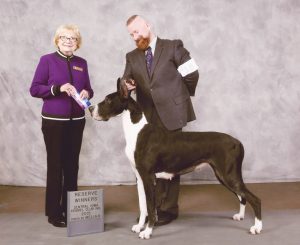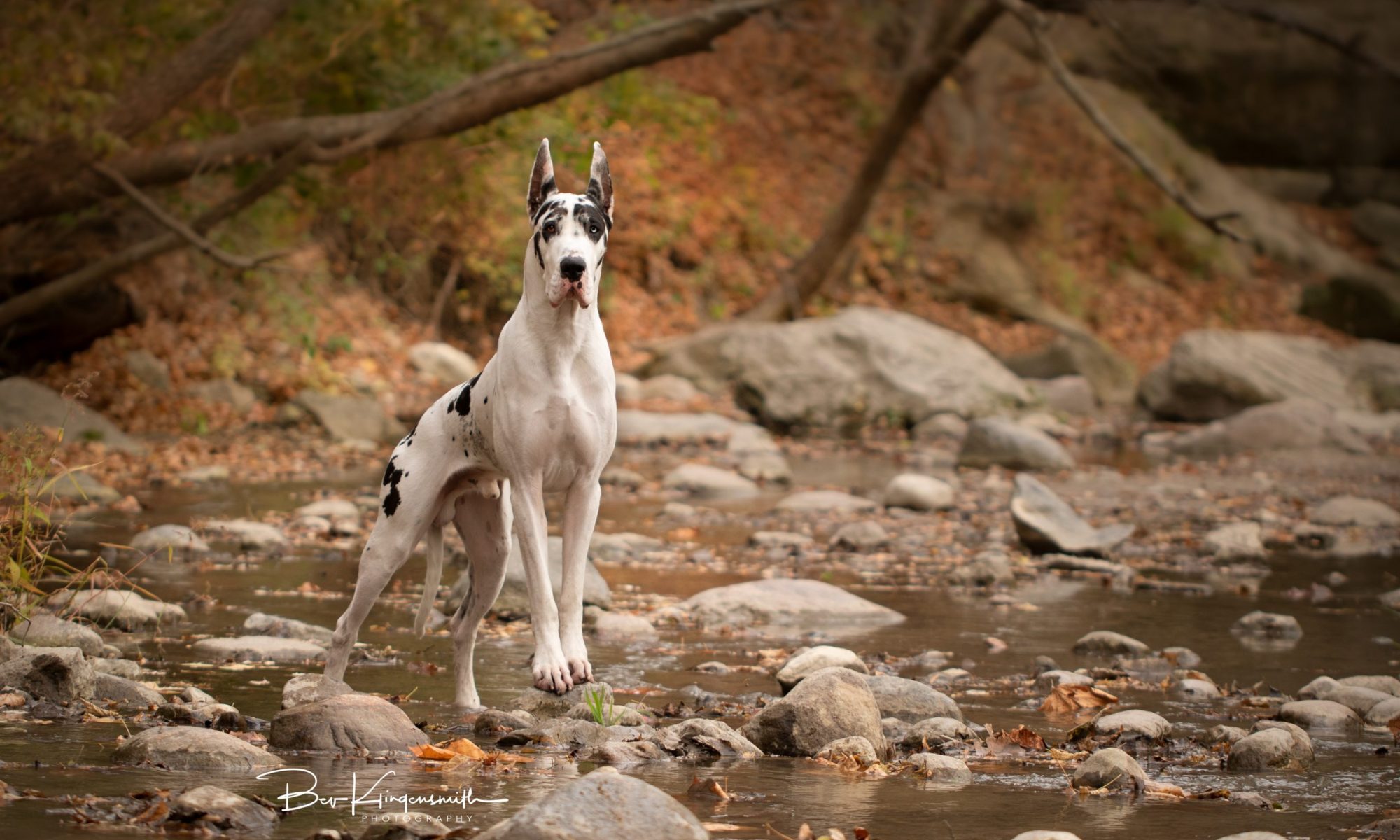Did you know where you purchase your dog is almost more important than the breed you select? Read that again. The breeder that creates your puppy is more than someone with whom you’re having a simple purchase transaction, they are creating the living being that will become your treasured companion, for which you will be responsible for the next many years. Choose wisely!
Put more effort into finding the right breeder than you did selecting the right breed.
Genetics play a role in your future companion’s health, temperament, and structure. The first 8 weeks of a puppy’s life also play a critical role in their temperament and behavior.
While most everyone has a basic understanding that there are different types of breeders, most stop at a distinction of a puppy mill or maybe even a “back yard breeder” and all else, but there is so much more! There are even well intentioned breeders who do not know what they are doing. Loving your dog does not make you a good breeder. A good breeder KNOWS AND CARES about what they are doing. Yes, all breeders have to start somewhere, however a good breeder utilizes mentors when they are just starting out.

Remember, temperament is genetic. Lots of health issues are genetic. How the puppy is raised that first 8 weeks of life will have serious impact on their personality FOR LIFE!
My first Great Dane came from a breeder who loved her dogs, but either didn’t know or didn’t care about what she was doing. He was very aggressive and I ended up having to euthanize him before he was three years old. It was devastating. Don’t set yourself up for that sort of heartbreak. Do your research and find a great breeder.
You will never regret taking the time to find a good breeder,
but you could regret it if you don’t.
Health Testing

A good breeder health tests their dogs prior to making the decision to breed them. Don’t be fooled by claims of “DNA” testing (most are worthless), unverifiable claims of vet clearance, claims of previous generations being tested, claims of dogs that live 15 years, etc. Go verify for yourself at www.ofa.org. For Danes, look for hips, heart, eyes, and thyroid. See more info about why a public database for health testing is so beneficial for our breed.
Showing

Most people on the search for a new puppy want “just a pet”. They have zero interest in showing and that is perfectly fine. But, a good breeder does show. Think of our breed standard like a blue print, depicting the most sound structure, along with some decorative aspects, which make each breed unique. The more deviations from the blueprint, the weaker the structure becomes. Those weaknesses lead to an earlier breakdown of the body, making it difficult for the dog’s frame to support them for the entirety of their lives. Read more about the importance of showing.
Even in the best of litters, most puppies go to pet homes. Only a handful of each litter is typically heading to the show ring. And, a “show breeder” is likely charging the same price as the backyard breeder you’ve seen advertising puppies!
Color
I implore you not to get so hung up on the desired color of a puppy that you settle and purchase from a questionable breeder. Color is easy to see, but should not be more important than health or temperament. I promise you will love any color Dane baby you bring into your home. If you are dead set on a certain color, please be very patient.
Danes have a unique color pallet in the dog world. And, lots of shady breeders capitalize on that and aim for even more “unique” colors. Danes come in seven show-able colors: fawn, brindle, blue, black, harlequin, mantle, and merle. This does not matter if you have no intention of showing your dog, but it should matter to a breeder. There is nothing inherently wrong with a non-show-able color, the problems arise when all a breeder cares about is producing a “rare” color. Responsible breeders do their best to produce dogs that will adhere to the breed standard, which does include color.
How the puppies are raised
The first 8-9 weeks of a puppy’s life are so critical!

Keeping the puppies clean will aid in house breaking once in your home. A pup raised in filth is very difficult to house train.
A good breeder safely exposes the puppies to sights, sounds, people, experiences, etc., to help make them into well adjusted adults. A puppy raised by a good breeder has a much lower risk of being nervous and fearful. Temperament is nature and nurture. It comes from breeders only breeding dogs with solid temperaments and then raising the puppies right. Check out some high level info how we raise puppies.
Now, you still have your work to do, too! Once in your home, puppy kindergarten classes are a must, as are basic obedience classes after they grow a bit older.
Do not deal with a breeder who allows their puppies to go home much earlier than the 8 week mark. Moms often quit feeding puppies earlier than that, but they learn social skills from mom and litter mates.
Breeder Reputation
A good breeder is respected among their peers. I encourage people to do reputation checks on breeders they are considering. Contact your local Dane club and/or the club near the breeder and inquire about the breeder. Ask if the club member would get a dog from the breeder you’re considering. Do allow for the fact that not everyone likes everyone else. If everything else about the breeder you are considering looks great, but you are hearing bad things from ONE person, maybe call a different club and make inquiries.
Where to find Good Breeders
Referrals! Breed clubs are fantastic sources for referrals. Good breeders don’t usually advertise as much as bad ones as their puppies are often placed long before 8 weeks of age, so they simply do not have the need. I’m not saying a good breeder never advertises, just that there are lots of good litters that you’ll only learn about via word of mouth.
Just because your neighbor has a Great Dane does not necessarily mean they acquired it from a good breeder. They love their dog dearly, so they typically speak highly of their breeder. But, even the worst of breeders can have some puppies turn out fine, but that really is not the odds you need, so don’t always trust every random referral from well-meaning people who lack the experience to really know.
The Great Dane Club of America does have a breeder listing page. Even if the folks listed are not planning a breeding, they should also be good referral sources.
Avoid any puppy sales websites like the plague! The chances of finding a good breeder on any website like “puppy find” or “puppy spot” (I refuse to link to them!) is slim to none. Don’t waste your time there.
Cost
Do not bargain shop! I understand cost is a huge factor for most homes, but if you cannot afford a well-bred Dane, consider either rescue or saving up and waiting. Cost varies, but plan around $2000-3500 for a non-cropped puppy and a bit higher for cropped. Prices substantially higher or lower should be concerning, although price does not equal quality. Plenty of shady breeders charge that or more.
If you see a breeder’s website with different prices by gender and/or unique colors, you are most likely not looking at a responsible breeder.
Good breeders do not take credit cards or payments before screening potential homes. If you ever see a “buy now” option on a breeder’s website, run!
Deposits
This is a tricky topic as there is a wide range of opinions. If the breeder is asking for a large, non-refundable deposit, please take great pause to make sure it is the right breeder before sending a check. If you feel pressured to make a hurried decision, it is likely not the right breeder for you.
I personally have not ever done deposits. If a puppy buyer backs out and decides at the last moment they don’t want the pup, I would rather they simply walk away vs taking a puppy when they are having second thoughts. But, some breeders have frustration over holding puppies and spending time with potential buyers, only to have the buyer ghost them.
Guarantees/Contracts
Guarantees are only as good as the breeder behind them. They offer buyers a false sense of security. There are a million ways a breeder can skirt the promises they make or they can simply drop off the face of the earth when problems arise. Don’t put stock in any guarantees. Instead, look for a breeder who cares enough to health test, who cares about their dogs, and their puppy people.
Do plan to sign a contract. This is another thing that varies among good breeders, but some basics include the puppy should be returned to them if you can no longer keep the dog and a spay/neuter agreement if you are not going to be showing a dog. You can ask to see the contract in advance, so you are not surprised by anything on pick up day.
Some Red Flags
Breeding pairs. This is breeding of convenience and has nothing to do with producing quality offspring.
Constant litters. This is probably more of a yellow flag. Whelping and rearing a litter correctly is expensive and exhausting. Responsible breeders do not have a constant supply of puppies. There is no magic number of what is right; each breeder is different in what they can responsibly handle. If you’re seeing puppies nearly always available, it should set off warning bells.
Advertising extra big or Euro Danes. Marketing ploy. See this article about Euro Danes.
Lack of doing anything with their dogs, other than pumping out puppies. The breeder does not belong to any clubs, have good peer connections, compete in any dog events, etc.
Pressure to buy a puppy. You should not feel pressure from a good breeder. They want to ensure people make well-thought out decisions about bringing a puppy home.
A rainbow of colors produced in one litter. Danes have three “color families”: fawn & brindle; blue & black; harlequin, mantle, & merle. That means you should not see blues and harlequins in the same litter, for example. And, the above listed colors are the only ones a breeder should be trying to produce. Good breeders breed within their own color family, with maybe an occasional “cross-color breeding”. Their goal is to produce dogs correct to the standard. Good breeders do not aim for “unique” colors, but it can occasionally happen. They do not market these puppies as “rare”.
No parents pictured on their website. Only the puppies. Pause and ask yourself why? Remember, your puppy is going to grow up and look a lot like mom and/or dad, so don’t you want to see what that will be? Purebred does not mean well-bred, so just because the puppy is X breed does not mean they will even look much like their breed if their parents do not.
Picking Your Puppy
You will not get “first pick”, no matter how much you pay or when in the litter timeline you contact a breeder. That is a very different concept for most people used to dealing with less than stellar breeders, who use a “first come, first served” concept or price puppies differently based on what buyers want.
Responsible breeder want to continue their breeding program. THEY will pick first and the pup will stay in their home or maybe with a close friend. To further that, you might only get to pick from a few pups from the litter or possibly even told that there is only one specific pup available for you. Good breeders evaluate their litters and they will decide what type of homes each pup needs. Maybe they want a certain puppy shown or maybe they will use temperament to decide which pup is going to which home. And, depending on the breeder’s methods, you might not know which puppy you will get until closer to the 8 week time frame. Most breeders make their final decisions at 8 weeks of age, which is fairly universally agreed to be the best time to evaluate a puppy’s structure. Good breeders do this because it isn’t about bowing to every buyer’s whim, it is about doing what is best for the dogs and their breeding program.
The “worst” puppy in the best litters is still way closer to standard – and has way better odds on health and temperament – than the “best” puppy from irresponsible/uneducated breeders.
Also, there is not typically a “runt”. While obviously some puppy has to be the smallest, usually it is only by a little bit and has no bearing on their adult size.
Visiting/Picking Up Puppy
Most all responsible breeders allow, and even encourage, potential puppy buyers to visit the litter. It is rare that you are dealing with a responsible breeder who will not allow you in their home to see the whole litter, how they are raised, and the grown dogs.
With COVID-19, life has changed a bit, but a good breeder should still allow an appropriate social-distance visit or maybe a FaceTimeZoom visit. They should gladly show off the puppies’ living conditions. And while puppies are messy, they should not be in complete filth. Litters are an amazing amount of work, but if a breeder isn’t keeping up with some basics, what else aren’t they doing?
Most often, the breeder will require you go to them to pick up the puppy. You should require that too!
What is expected of YOU
A good breeder cares about the type of home you can offer one of their puppies. Be prepared to answer questions about your home, your schedule, your needs/wants in a dog, your expectations, etc. Be open and honest with the breeder.
If the breeder is not asking you any questions, you are not dealing with a responsible breeder. Good breeders care about their puppies and want good homes! (They also do not auction puppies or use third parties to sell puppies – you should always deal directly with the breeder.)
Summary
Hopefully this information is helpful and allows you to find the best breeder and the best dog for your home. Finding a good breeder will stack the odds in your favor, to best ensure obtaining a dog who is structurally sound, of stable temperament, and good health.
Do reputation checks! If you have a breeder you’re considering, email other respected breeders and ask about them. Good breeders have no problem recommending other good breeders. Yes, occasionally you might find breeders that dislike someone for personal reasons, so I always recommend asking a couple people. Find contacts via the parent club for your breed (for Danes, the Great Dane Club of America) and/or your area’s affiliate club contacts.
Even if you find someone who appears to be a good breeder, if you don’t feel they are right for you, keep looking. You want a breeder you feel comfortable calling/texting/emailing with all sorts of questions.
Take your time and do not rush to get a puppy!
